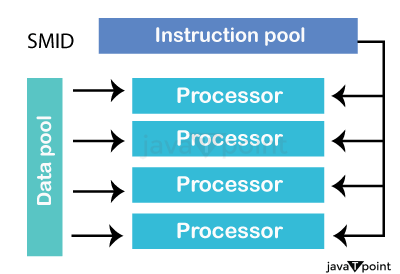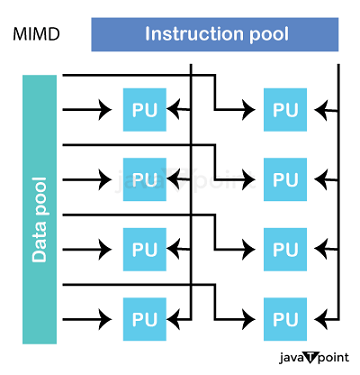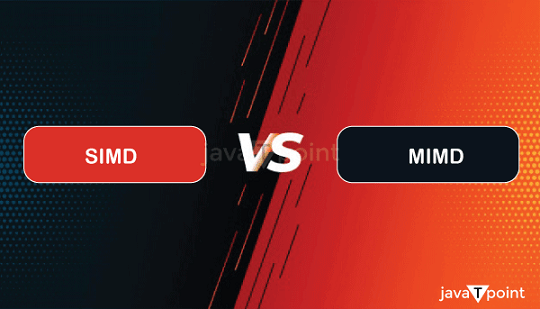Difference between SIMD and MIMDSIMD and MIMD are the two main computer architectures. These architectures are utilized to enhance the performance of specific computing activities. The quantity of data and instruction streams serves as the foundation for this classification. SIMD is a computer architecture that allows a single instruction to be executed on numerous data streams. In contrast, the MIMD computer architectures may run multiple instructions on different data streams. The main objective of this classification is to categorize parallel processing. It operates by considering the processor's internal architecture, which begins with the connectivity structure among processors or the flow of data via the systems. In this article, you will learn about the difference between SIMD and MIMD. But before discussing the differences, you must know about SIMD and MIMD, with their advantages and disadvantages. What is SIMD?SIMD is an abbreviation for "Single Instruction Multiple Data". It is a type of parallel computer architecture that Michael Flynn classifies under Flynn's categorization. In this SIMD architecture, a single instruction is implemented to multiple data streams. It is made up of a single control signal that calls many discrete processing units. As a result, all of the processing units accept the identical instruction from the control unit and apply it to different data components. 
It employs a shared memory unit that is separated into several modules. Therefore, the memory unit may communicate with all the processing units at the same time. It consumes less memory because it utilizes a single copy of instruction on several data streams. Furthermore, SIMD architecture needs a single instruction decoder that helps to minimize the overall system cost. Advantages and Disadvantages of SIMDThere are various advantages and disadvantages of SIMD. Some main advantages and disadvantages of SIMD are as follows: Advantages
Disadvantages
What is MIMD?MIMD is an abbreviation for "Multiple Instruction Multiple Data Stream". It contains computer systems with numerous processor units, data streams, and instruction streams. It utilizes numerous instructions for various data sets at the same time. MIMD systems are the most complex configuration, but they also ensure efficiency. It offers high concurrency by allowing numerous processors to run concurrently in the same time frame in addition to the same operation of processors. It works effectively with both distributed and shared memory models. 
This architecture doesn't require any extra control unit that helps to decrease the system's overall cost. It also ensures that conditional statements, such as if/else expressions, that are executed efficiently. It is due to the processing unit's independence. It is more flexible and well-suited to tasks that need more complicated and diversified calculations, such as general-purpose computing and AI apps. Advantages and Disadvantages of MIMDThere are various advantages and disadvantages of MIMD. Some main advantages and disadvantages of MIMD are as follows: Advantages
Disadvantages
Key differences between SIMD and MIMD
There are various key differences between SIMD and MIMD. Some of the key differences between SIMD and MIMD are as follows:
Head-to-head comparison between SIMD and MIMDHere, you will learn the head-to-head comparisons between SIMD and MIMD. The main differences between SIMD and MIMD are as follows:
ConclusionIn conclusion, SIMD and MIMD are two major computer architectures. SIMD architecture supports synchronous processing, in which a single instruction is executed on several data streams simultaneously. In contrast, MIMD architecture utilizes an asynchronous approach in which multiple instructions work on numerous data streams. When compared to the MIMD architecture, the SIMD architecture is less complex and efficient. Implementing Control Unit overlap significantly impacts SIMD and MIMD architecture performance, depending on its uniformity. SIMD architecture outperforms MIMD in uniform CU (Control Unit) overlap cases. In contrast, MIMD architecture outperforms SIMD in cases of non-uniform CU overlap.
Next TopicDifference Between
|
 For Videos Join Our Youtube Channel: Join Now
For Videos Join Our Youtube Channel: Join Now
Feedback
- Send your Feedback to [email protected]
Help Others, Please Share










